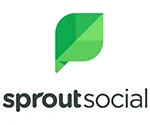 |
| Adolfo Corujo |
When I started in marketing and information retrieval 20 years ago, I thought that what we currently call Artificial Intelligence (AI) would shock us with its capacity for rational thought.
We knew AI would be very good at tasks involving what psychologist and economist Daniel Kahneman termed “fast thinking,” the information processing system in our minds that can efficiently handle repetitive tasks and patterns, but relatively clumsy in tasks requiring “slow thinking,” which handles complex strategic thought. However, starting in late 2019, generative AI models have excelled in maximizing our intuitive and creative processes as well.
Many marketers used to believe that pattern detection techniques would transform the planning process, while the creative process would remain unchanged. Today, we can easily accept that analyzing data with AI tools is much more efficient, but many remain unaware that AI has also changed how we approach creativity. Advancements in conversational models, image and audio generation, and virtual reality are not only prompting new ways of thinking, but are also helping create a new wave of highly innovative and effective advertising materials.
We have heard countless claims that machines can't replace our creative abilities, but most people miss the point. The question isn’t “How will AI replace us?” but “How will AI complement our work?” (or augment it, as today’s AI gurus often say). To better understand this, we can look at the definition of complement: To “add to (something) in a way that enhances or improves it; make perfect.” Therefore, the core question should be. “How can integrating AI into creativity shape, refine and potentially elevate our end results?”
Technology has radically contributed to artistic expression—which is just one facet of the infinite range of human activities involving creativity. This includes everything from painting and writing to music and cinema, and beyond. Throughout history, artists have found ways to better express and realize their ideas, visions and messages by using tools of various kinds. What I find fascinating is how adept many of us have been at integrating new techniques and formats into our creative processes. In our hands, new technologies have not only enhanced the quality of our creative works, but also contributed to amplifying and extending the messages and impacts.
In 2023, generative AI is revolutionizing creativity in advertising as much as in any other profession. It's not about replacing creatives, but about enhancing their work by helping them develop, plan, choose or execute the endless possibilities generated using AI’s ability to simulate fast thinking. With these technologies, creatives are not only producing content more quickly, but also communicating with their colleagues and clients in a more effective manner.
This leaves the question of slow thinking. Requiring time and effort, this type of strategic thought is essential to things like final campaign decisions. It demands a subjective perspective, and it remains firmly in human hands. Machines can provide richly processed information, offer alternative perspectives, hypothesize solutions, and verify facts. But it's still creatives who must choose which ideas to use in their strategies.
In the near future, we can expect to see technologies that bridge data collection and creativity. These tools will help us throughout the creative process, from inception to execution. And yet, they will still need human input every step of the way to truly shine. If what we have seen from the AI revolution so far has been surprising, then future advancements will amaze us. AI will increasingly augment advertising and marketing creatives’ work, leading to a qualitative leap forward in campaign impact. Believe it or not, we’re very close to this reality.
However, these new technologies don't guarantee success. Just look at oil paint in art, four-track recorders in music, or color in cinema. While some artists, musicians, and filmmakers incorporated these new tools to create astounding new works, others did not. In communications, success will still depend on the human behind the screen. Some will leverage it to great success, but unfortunately, others will not. And in the end, clients will know who to choose.
***
Adolfo Corujo, partner and deep digital CEO at LLYC, is an enthusiast of virtualization and an expert in Internet-based reputation who has designed and implemented digital identity and reputation projects for various multinational companies across industries, including food & beverage, tourism, finance, telecommunications, construction, entertainment, and more. Adolfo continues to teach and present papers on topics such as Enterprise 2.0, Personal Branding, and Online Reputation at business universities globally.


 Thanks to advances in AI, social media has now taken a leading role in providing customer support services for brands, with adoption achieving noted fanfare among Gen Z consumers.
Thanks to advances in AI, social media has now taken a leading role in providing customer support services for brands, with adoption achieving noted fanfare among Gen Z consumers. Why universities must offer Communications Engineering degrees in the AI-driven world.
Why universities must offer Communications Engineering degrees in the AI-driven world. The Windy City is bullish on AI, according to a recent survey conducted by the Communications Leaders of Chicago in conjunction with DePaul University’s College of Communication.
The Windy City is bullish on AI, according to a recent survey conducted by the Communications Leaders of Chicago in conjunction with DePaul University’s College of Communication. The emergence of generative artificial intelligence (Gen AI) technology is a curveball that has the potential to significantly disrupt and erode voter trust in the media and governmental leadership.
The emergence of generative artificial intelligence (Gen AI) technology is a curveball that has the potential to significantly disrupt and erode voter trust in the media and governmental leadership. The process of conducting searches is being transformed by generative AI, which is now embedded within search engines such as Bing, Perplexity, and Google's Search Generative Experience.
The process of conducting searches is being transformed by generative AI, which is now embedded within search engines such as Bing, Perplexity, and Google's Search Generative Experience.


 Have a comment? Send it to
Have a comment? Send it to 
No comments have been submitted for this story yet.